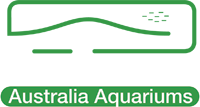0
CORAL REEF CONSERVATION PROJECT – THAILAND
Project outline:
Location: Koh Samui – Thailand
Role in Project: Feasibility study, Site investigations, Structural Design, Aquarium Supply, Build Supervision, Consultation, in-sea coral re-plantation, Brand consultancy, and Website design.
Year of Build: 2012-13
Size: N/A
Construction: Concrete, Steel and Glass
Time in Construction: 6 months
Annual Visitation: N/A
Some aquarium companies sell plastic artificial live rock or coral as “environmentally friendly products”. Others genuinely assist in reducing the strain on the environment caused by coral reef keeping or the marine aquarium hobby through coral propagation programs. However, few companiesin the world actually get in the sea to make a difference.
The island of Koh Samui, Thailand suffered an ecological disaster approximately 4-6 years ago when up to 70% of its fringing coral reefs were severely damaged due to adverse environmental factors.
Reefscape Thailand Aquariums while engaged on a project on the holiday island of Koh Samui, noted the destruction of the reefs and decided to take action to save the coral.
Reefscape Australia Aquariums established a privately funded organisation (run as an not for profit venture) called Coral Alive.org. The primary focus of Coral Alive.org. is to regenerate and conserve the coral reefs of Thailand. Reefscapa Australia Aquariums donated hundreds of man hours, a 2m glass coral aquarium tank and built an in-sea coral conservation support center on the beach shore.
Reefscape Australia and Reefscape Thailand Aquariums worked with local businesses in a very remote area of Thailand to establish a beach side coral restoration and conservation program.
While Reefscape Australia and Reefscape Thailand have both built very complicated aquariums, this aquarium project was challenging. The area selected for the trial program is located in a very remote area of the jungle. There is no mains electricity or roads found there.
Glass for the test aquarium and all equipment and infrastructure had to be hauled in by 4×4 trucks over mountainous jungle terrain. All electricity is provided by Diesel powered generator.
To make the challenge even more interesting, Thailand conservation law does not permit coral of any type to be removed from her seas. Simple in-sea “coral fragging” techniques (planting and growing of coral cuttings) had to be developed to propagate the coral reef and spread the coral while respecting Thailand’s conservation laws.
Coral fragging techniques used by Reefscape Australia Aquariums and many experienced aquarists and aquarium coral growers, were adapted successfully to be carried out in the sea without the need to remove coral frags from the water.
Reefscape Australia donated to Coral Alive the intellectual property behind Reefscape Rock™, a revolutionary coral growing product, gained through 5 years of Australian government-funded research. Reefscape Australia and Reefscape Thailand saw the Coral Alive reef conservation project as an opportunity to give back to the sea and the coral reefs which sustain Reefscape’s business and the reef aquarium hobby.
Reefscape Australia Aquariums wishes to thank the Australian Government, local businesses, donors and volunteers for their support during this project. Without them, none of this would have been possible.
Reefscape’s work included:
- Site testing
- Coral regeneration site feasibility study
- Construction of a 2m x 0.75m x 0.75m glass coral reef aquarium
- Construction of on-shore coral re-plantation infrastructure and dive shack
- Consultation on In-sea coral plantation techniques
- Establishment of a not for profit eco-tourism entity – Coral Alive.org
- Brand consultancy, web design and art-work creation
- Ongoing testing and study
The detail of this project is far more than can be communicated effectively on this page, please contact us directly for more information.

Water is tested in a specially constructed reef aquarium. The tank is used as a controlled environment from which comparisons are made to in-sea conditions and their effects on coral growth rates.
